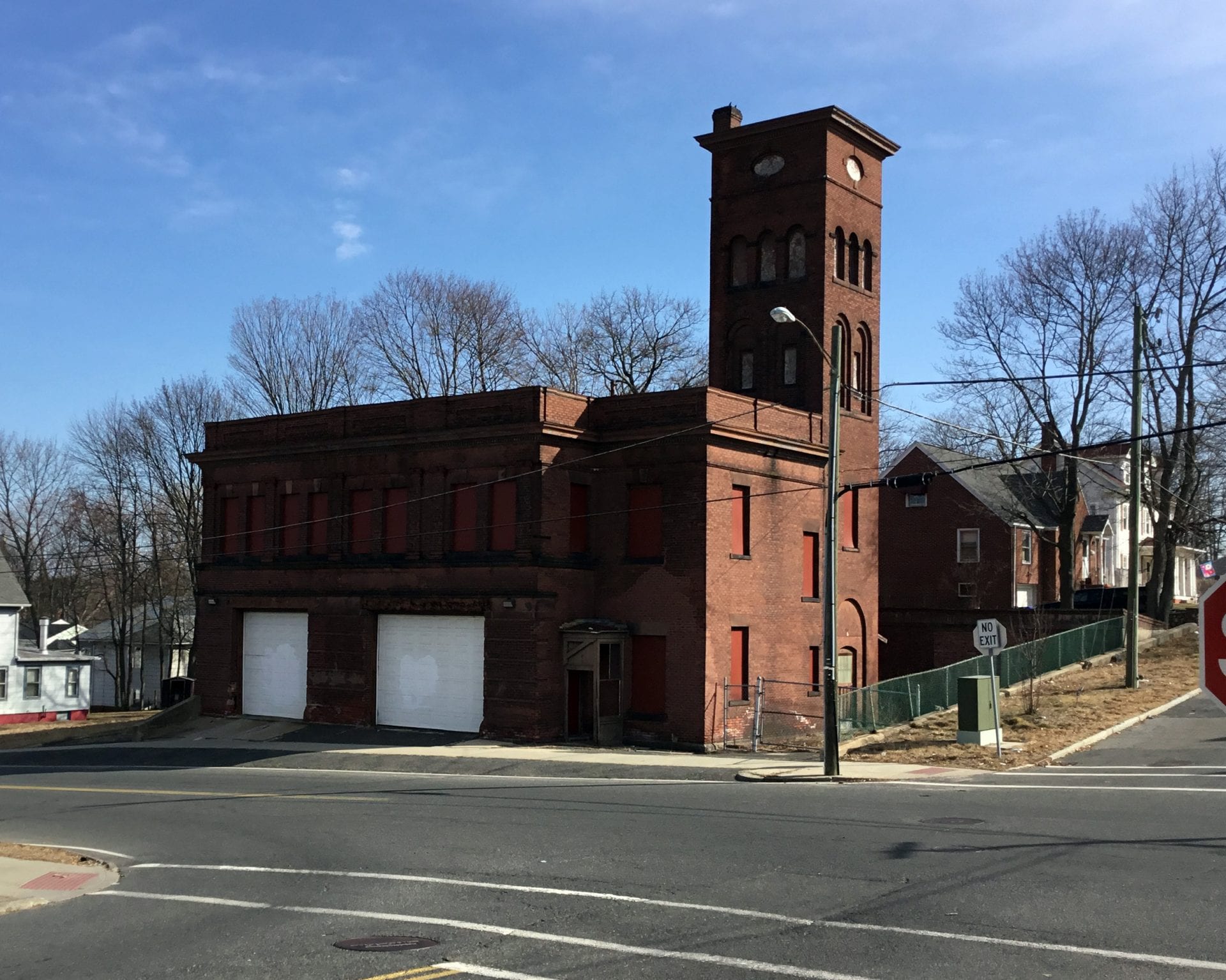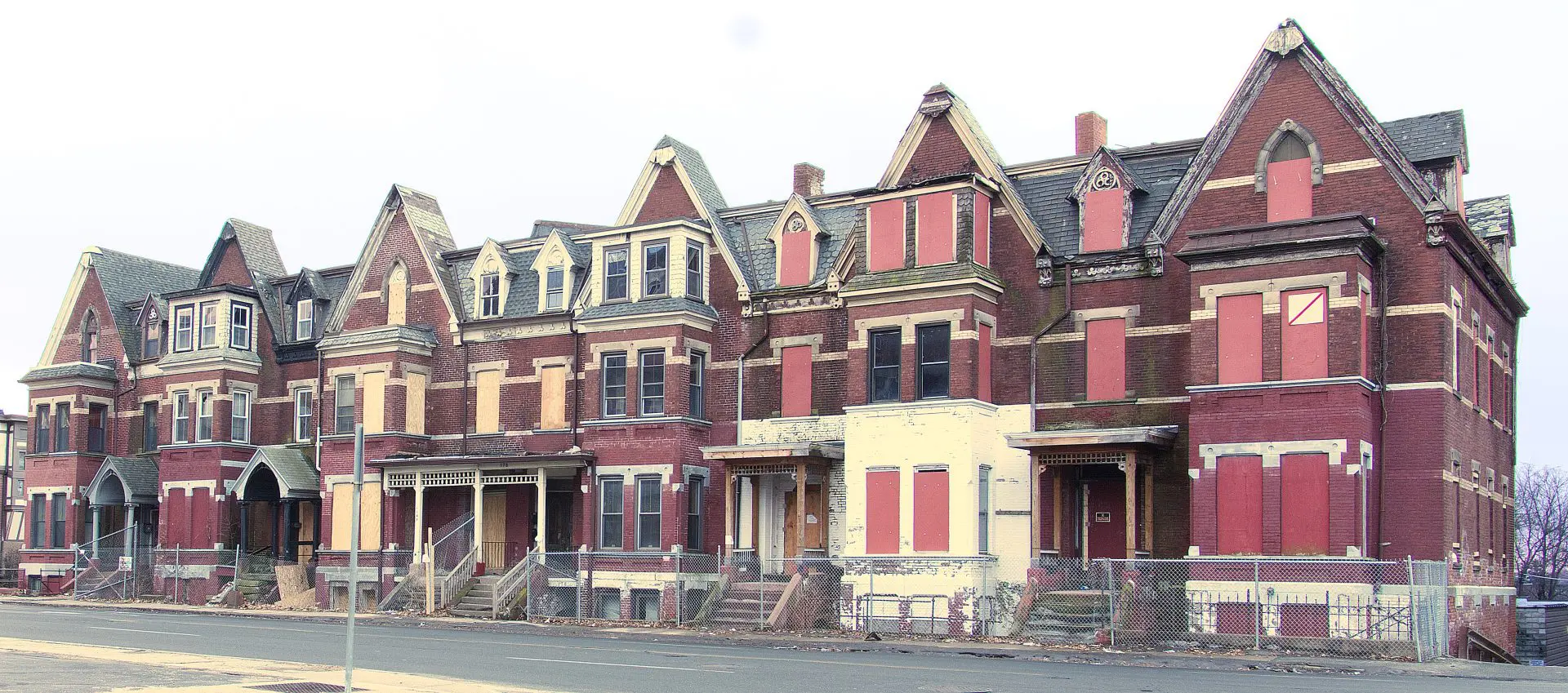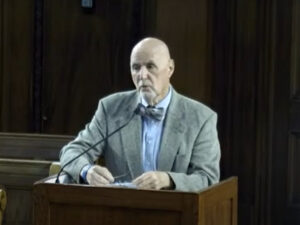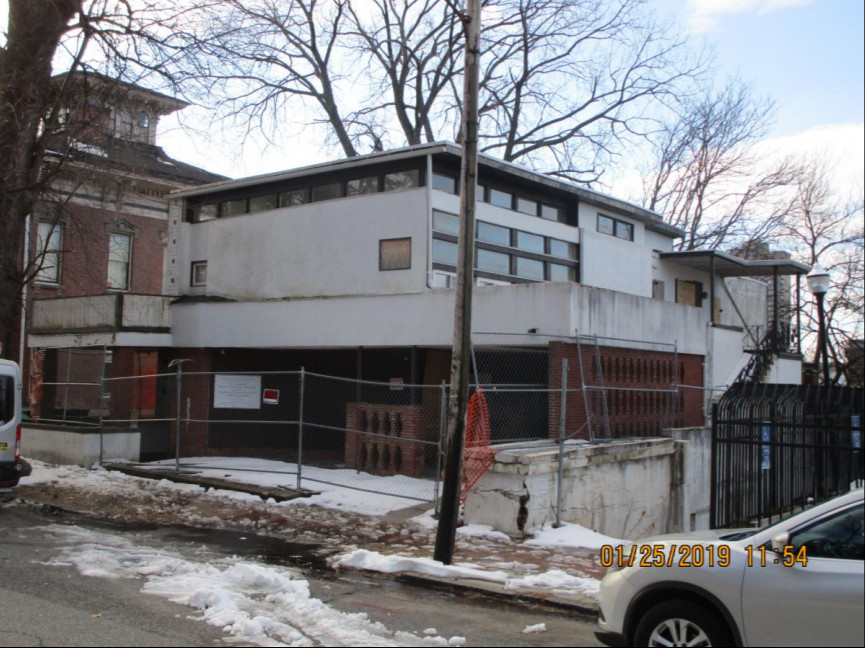Springfield CPA Projects Go Big on Endangered Structures for FY25 Grants…
SPRINGFIELD—Alongside normal business at its June 10 meeting, the City Council greenlighted a list of projects that received funding under the Community Preservation Act (CPA). In 2016, voters authorized a 1.5% surcharge on tax bills. The state matches to some extent and has upped its commitment in recent years. Therefore, Springfield’s Community Preservation Committee (CPC) has seen its capacity to fund projects grow.
The Committee’s chair, Robert McCarroll, announced nearly $3 million in projects for fiscal year 2025. This technically exceeds the CPC’s income from the tax levy, state support and interest. Among the projects announced Monday were some that had previously received CPA funding but did not pan out. McCarroll offered new hope for these projects, using the money returned to the CPC’s reserve account. These and other projects are possible thanks to the $13 million the city has raised under the CPA.
“I always like to remind the City Council that if they had not voted in 2016 to put this on the ballot, so the voters of Springfield could decide if they wanted to contribute to CPA, we would not have had this $13 million,” McCarroll said.
The state enacted the CPA in 2000. Communities can choose how much to surcharge tax bills, but the law has some ruless on how the money is spent. There are three categories of spending: housing, open space/parks, and historic preservation. At least 10% of a municipality’s CPA annual expenditure must go into each of these categories.
McCarroll presented 14 projects Monday. While some councilors had questions, all items received approval. The Council also approved the CPC’s overall budget, which included $79,400 for administrative costs. Ward 8 Councilor Zaida Govan abstained from all CPA votes because she serves on a board of an organization that received funding.
A policy question that came up was whether housing that the CPA finances carries tenant income restrictions. McCarroll told councilors that work financed under the housing category has such rules, although they are looser than other state housing policies. However, if the historic preservation category pays for work on a residence, it can be market rate.
At-large Councilor Tracye Whitfield asked why the city itself is often a CPA grant applicant. McCarroll observed that local government is a common applicant in many municipalities participating in the CPA.
“I think Springfield is probably in the vanguard in the number of things that we give to non-municipally-related organizations,” he said. High-dollar exceptions this year that went to the city were for structures on Maple and Byers streets that have extensive deterioration.
The Springfield CPC, which consists of appointees from various municipal boards and commissions, has imposed other rules on itself. For example, it has established reserve funds for each category as well as a general reserve. The CPC does not award a single project more than $300,000 (previously $250,000) in any given year. However, it may fund separate phases of the same project over several years.
One such example was a $300,000 award for exterior restoration at the Art Deco D’Amour Museum of Fine Arts at the Quadrangle. In 2022 and 2023, the CPC had previously recommended, and the Council authorized, grants for two earlier phases of the work. This year, the project will complete window replacements and cleaning of the budling. Environmental issues, including preservation of art inside, made the window replacement an expensive endeavor.
A flagship program of the CPC is the Historic Homes Restoration Program. Rather than going to a single property, it funds a lottery for owners of historic homes to enter and receive funds for smaller repairs. These can range from roofs and porches to shutters and painting.
Under questioning from councilors, McCarroll explained that before the CPC started the program, Springfield had lacked a residential assistance program for historic homes since the 1990s. Whitfield inquired about how residents would learn about the lottery. McCarroll said there had been an early mass mailing. Since then, the CPC focuses on public awareness via the media. Those who entered in previous years but had not won are automatically reentered.
Whitfield urged McCarroll to look at another mass mailing, which he said the Committee would consider.
While most large grants fell under the historic preservation category, one noteworthy exception was a $300,000 grant to renovate and improve Van Sickle softball diamond. The applicant was the Springfield Old Timers Softball League. Longer term, the city will work to move the diamond from the School Department and Housing Authority to the city’s open space inventory.

Repeat Applicant. (via Springfield Preservation Trust)
Some projects, like the D’Amour Museum, were multi-year projects mostly relying on CPA money. For the Indian Orchard Fire Station redevelopment, CPA funding was only a small part of the overall project. After years of attempts to sell the building, the city decided to redevelop it as a community center.
The $4 million price tag only relies on $550,00 from CPA. Last year, the Council authorized $250,000 for exterior improvements and stabilization. This year, the CPC recommended $300,000 to defray the cost of installing an elevator.
The Indian Orchard Citizens Council is among the principal beneficiaries of this project. Councilor Govan served on the board, hence her abstentions. Ethics rules discouraged her from speaking on the project. However, at-large Councilor Jose Delgado, who said he had lived in Indian Orchard at one time, offered support on her behalf.
“I’m glad it is coming back to life,” he said.
Across town, the CPC recommended two $300,000 grants for a troublesome block at the corner of Maple and Central Streets. A row of six rowhouse have bedeviled the city for years. It shares a tortured development history with the Parsons apartment block across the street. However, the rowhouses’ troubles go back further.
Before the pandemic, Roger Roberge, who redeveloped the Sumner Avenue fire station, had put forward plans to renovate the block. He had even secured CPA funds.
Two of the units, 174 and 176, had been tax foreclosed and reverted to city ownership when his plans fell through. The Parsons block, which Roberge had also purchased, returned to city control in a similar fashion.
Unlike the Parsons block, however, no developer has materialized to renovate the two rowhouses. Compounding the situation, 174 suffered an attic fire earlier this year. The $300,000 for 174 and 176 will be dangled as incentives for would-be developers as the city issues a request for proposals from qualified developers.
Another $300,000 grant will go to the owner of the other four rowhouses. Springfield resident Paul Bongiorni, representing his company Maple Street Rowhouses, LLC, said the project would yield 12 apartments of various configurations. Bongiorni’s company bought the properties directly from one of Roberge’s, though. Therefore, it was not a tax foreclosed property.
The CPC’s presentation documents state that the money will principally fund exterior restoration. The total projected cost for the renovation is $2 million.
Another project that had secured non-CPA historic preservation money and fell through was 60 Byers Street. As with the two Maple Street rowhouses, this request was for $300,000 to stand as an incentive for a future developer. This money would come out of the housing category. Thus, its eventual occupant would need to make below 100% of median income to meet the CPA requirements.
The building on 60 Byers Street, also called the Munson House, is a rare Springfield example of the International style that Frank Lloyd Wright pioneered. The developer had sought and secured a historic district designation from the City Council. The CPC usually requires a district, too, but projects the Maple Street rowhouses are already in a historic district. However, the structure experienced a fire and the developer walked away.
The CPC also recommended a $300,000 grant for St. John’s Congregational Church on Hancock Street. The 1911 church has long served the Old Hill and nearby neighborhoods. The money will fund exterior repairs, including siding. Congregants from the church filled the front row of the chamber Monday.
Stepping down to $250,000 was a grant for improvements to Treetop Park, which straddles the line between the East Forest Park neighborhood and the Outer Belt section of 16 Acres. The Outer Belt Civic Association and the city parks department sought the funds for improvements, including an accessible swing set and a walking path.
Another $150,000 grant will finance restoration work at Clarendon Fountain and Triangle Terrace in the McKnight neighborhood. The CPC’s presentation documents say the triangle is one of eight open spaces the eponymous McKnight family donated.
The CPC recommend $60,000 to help fund the final phase of the Drama Studio’s transformation of the former All Saints Episcopal Church in the Forest Park neighborhood. The elevator shaft will be exterior to the building.
Another smaller historic project with a value of $35,213 will support restoration of vintage lampposts in the Colony Hills Local Historic District. Colony Hills, wedged between Forest Park and the Longmeadow line, is one of the city’s newer historic districts. The funds will repair, restore and/or replace six lampposts which date to 1921, proximate to the neighborhood’s creation.
Springfield CPA projects for FY2025 rounded out with $55,000 to fight invasive Japanese knotweed on city parkland citywide and $13,000 to restore flora in Glendell Park. The latter refers to a sliver of green that functions as the terrace to Glendell Terrace. That street runs between Euclid Avenue and Horace Street.


